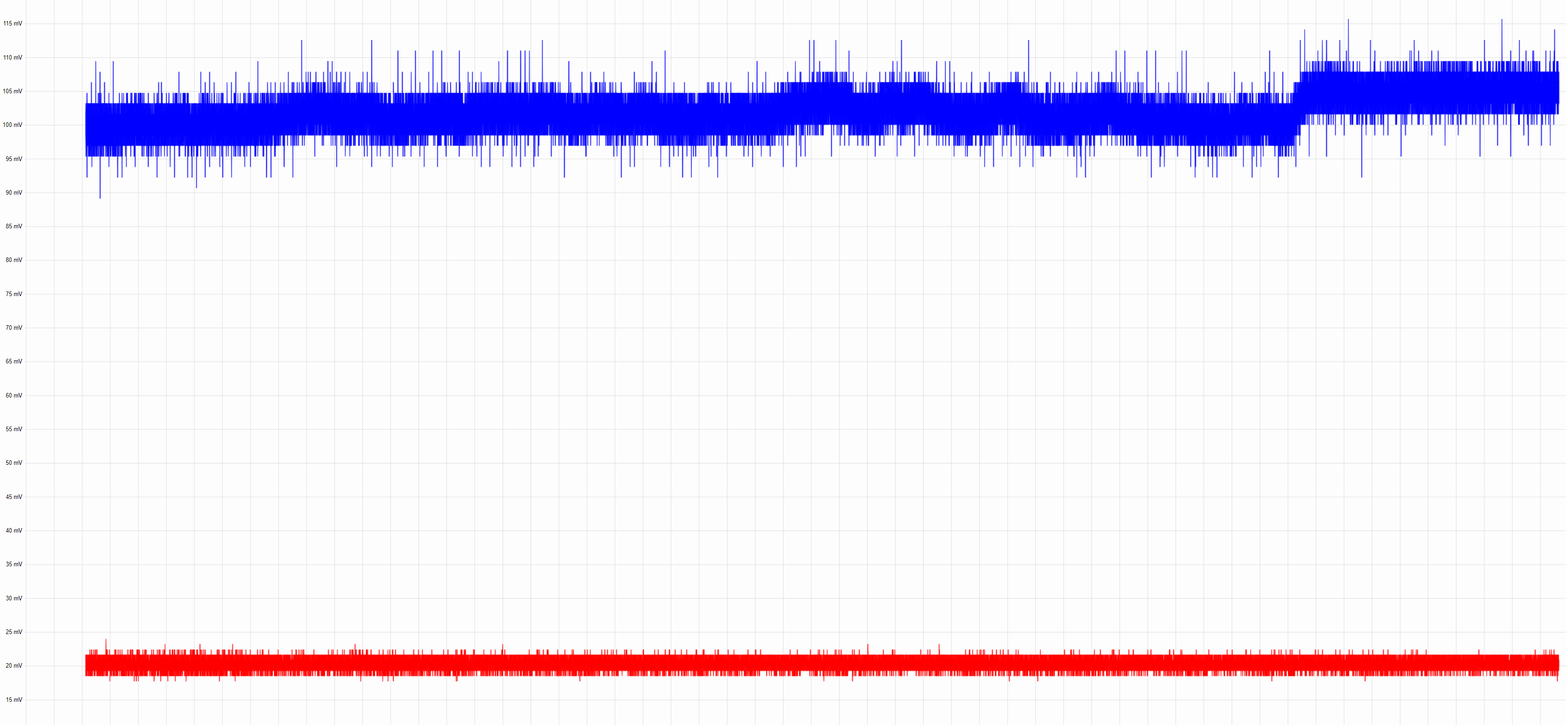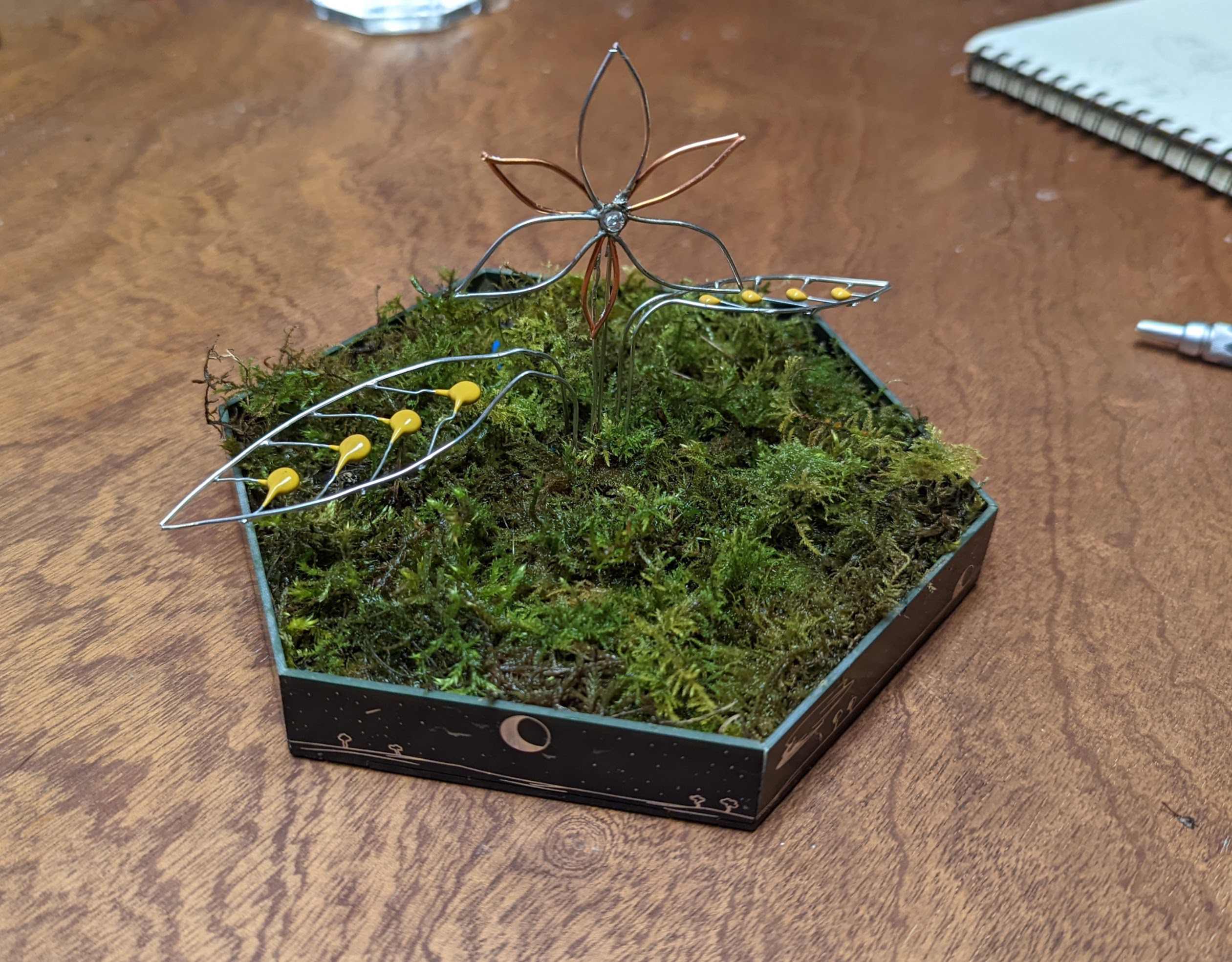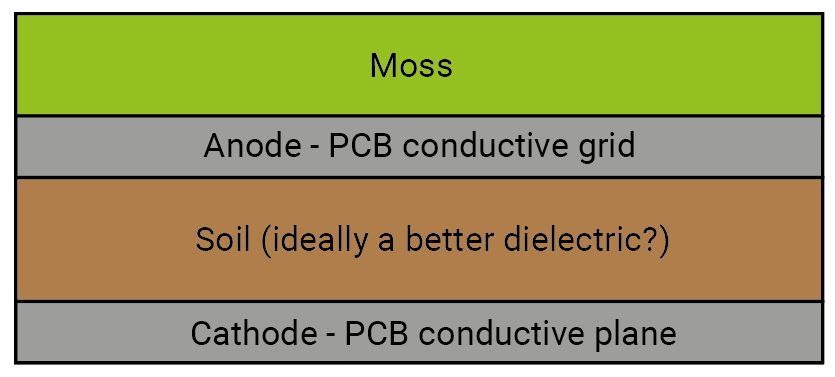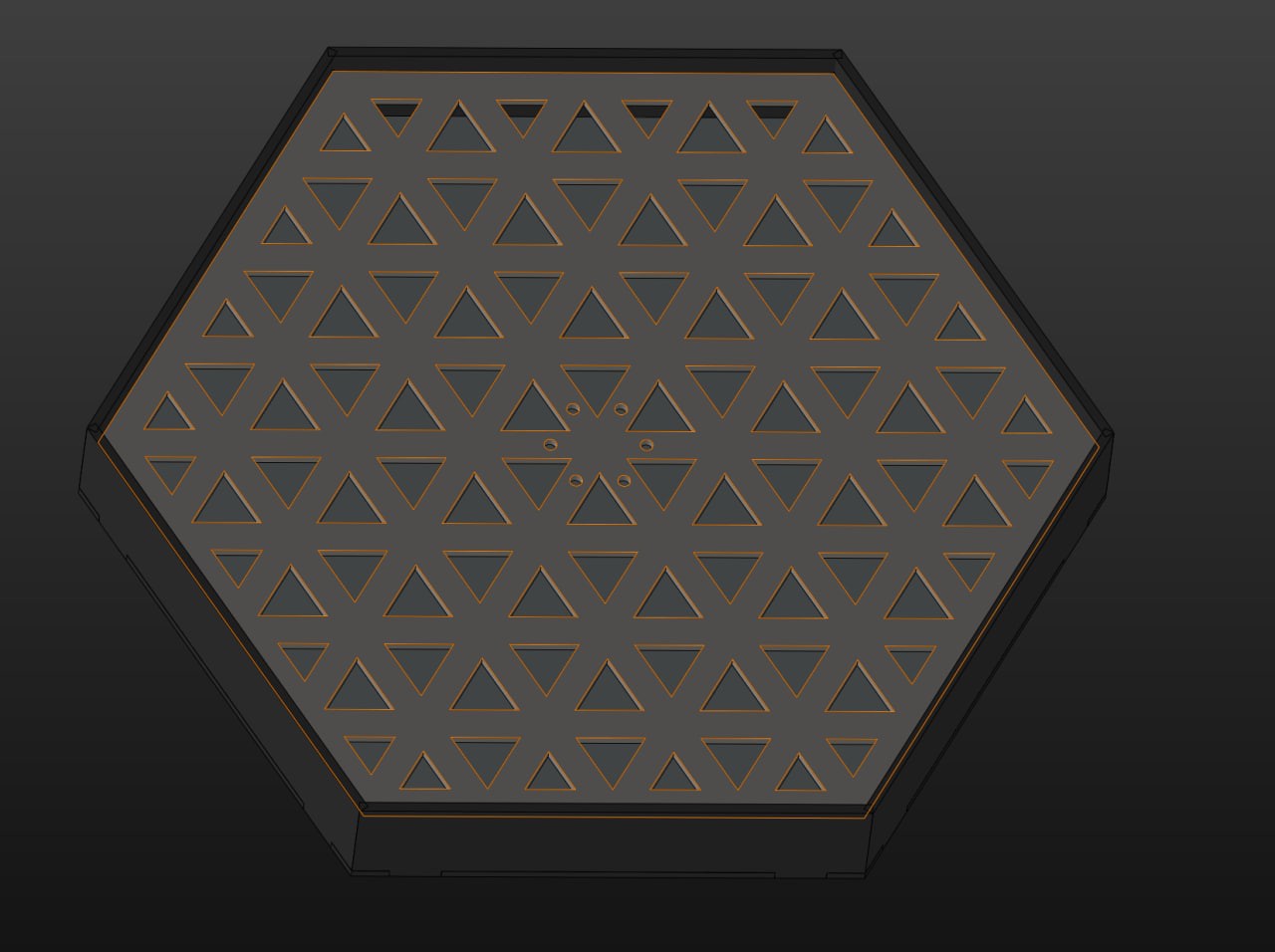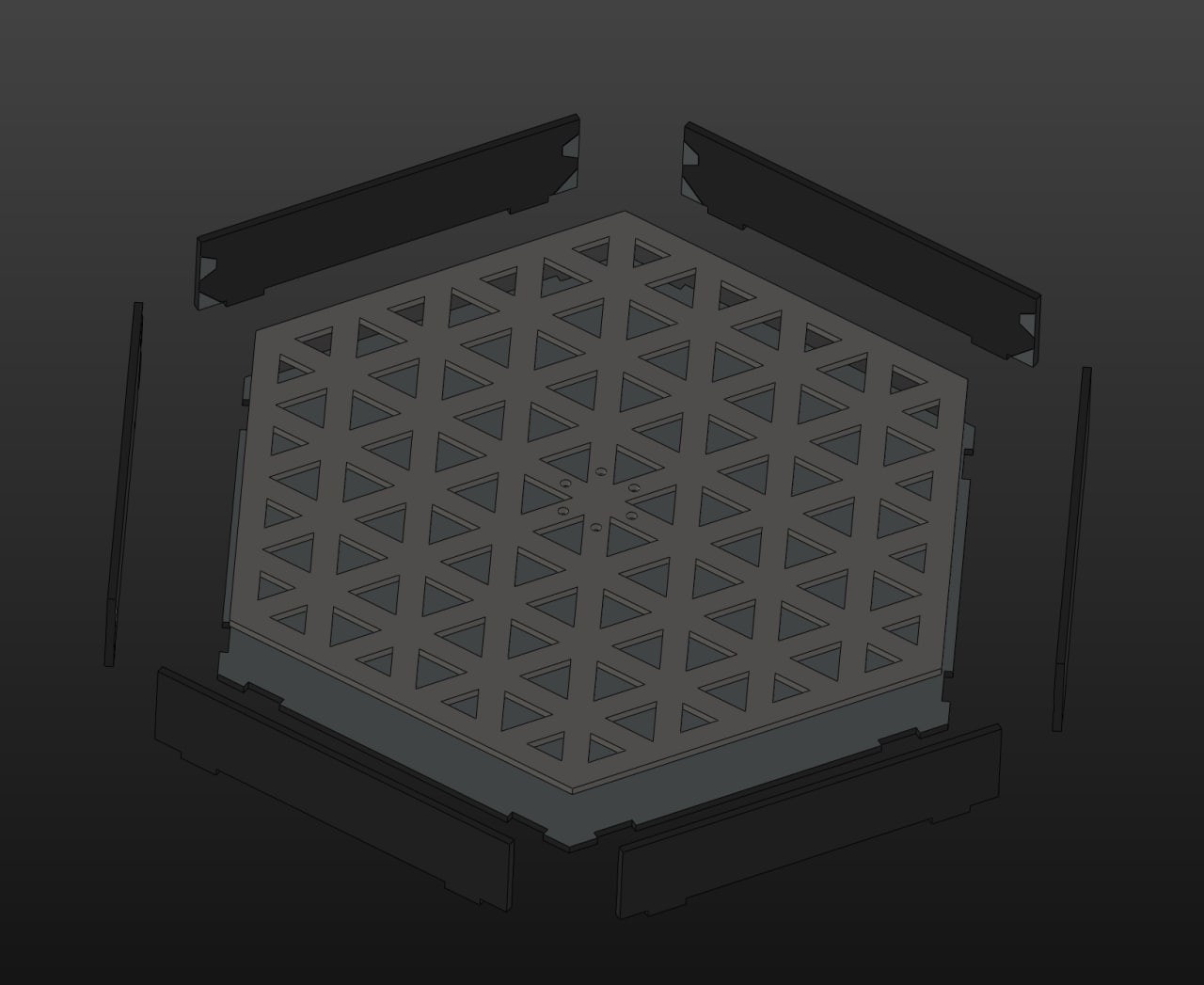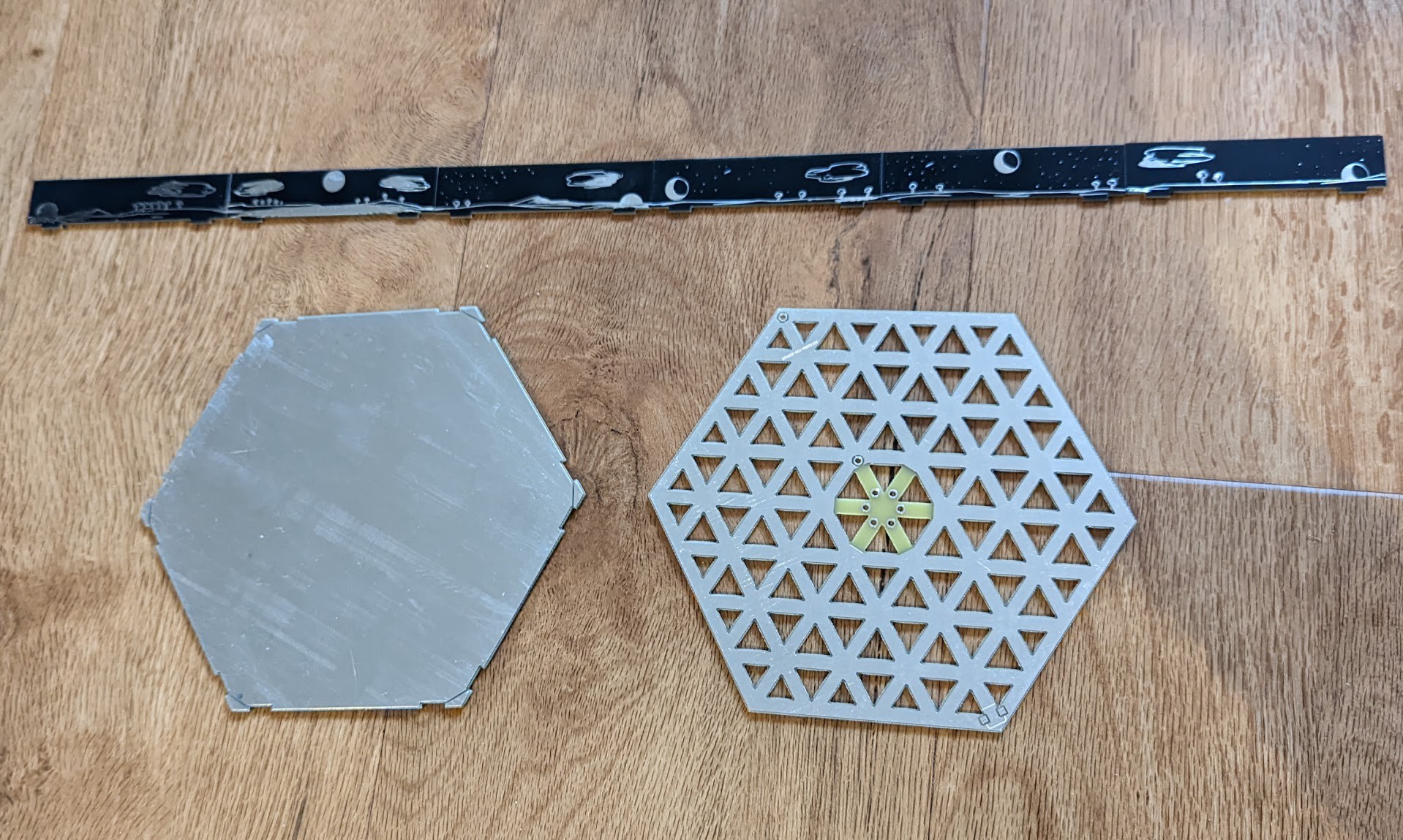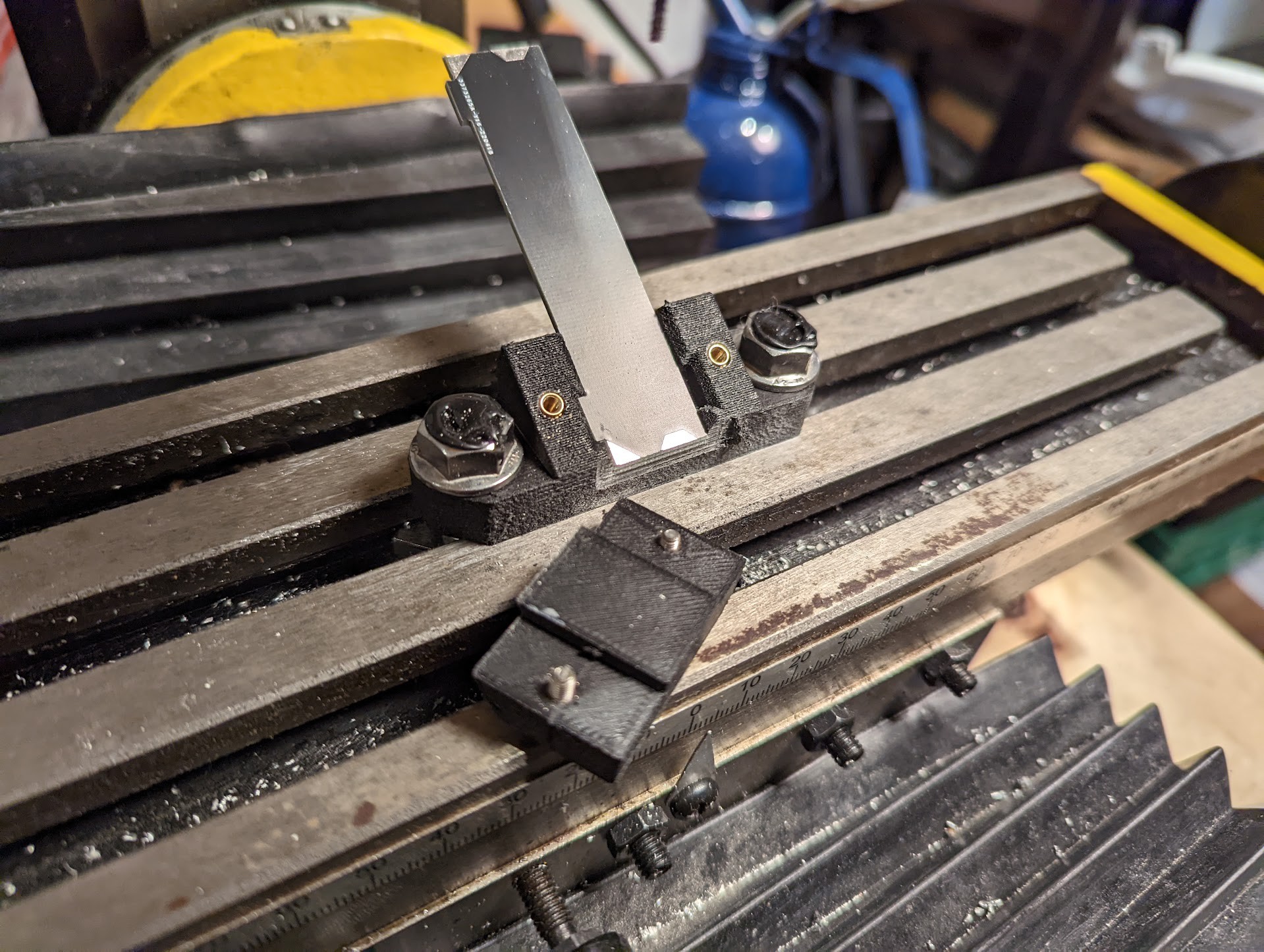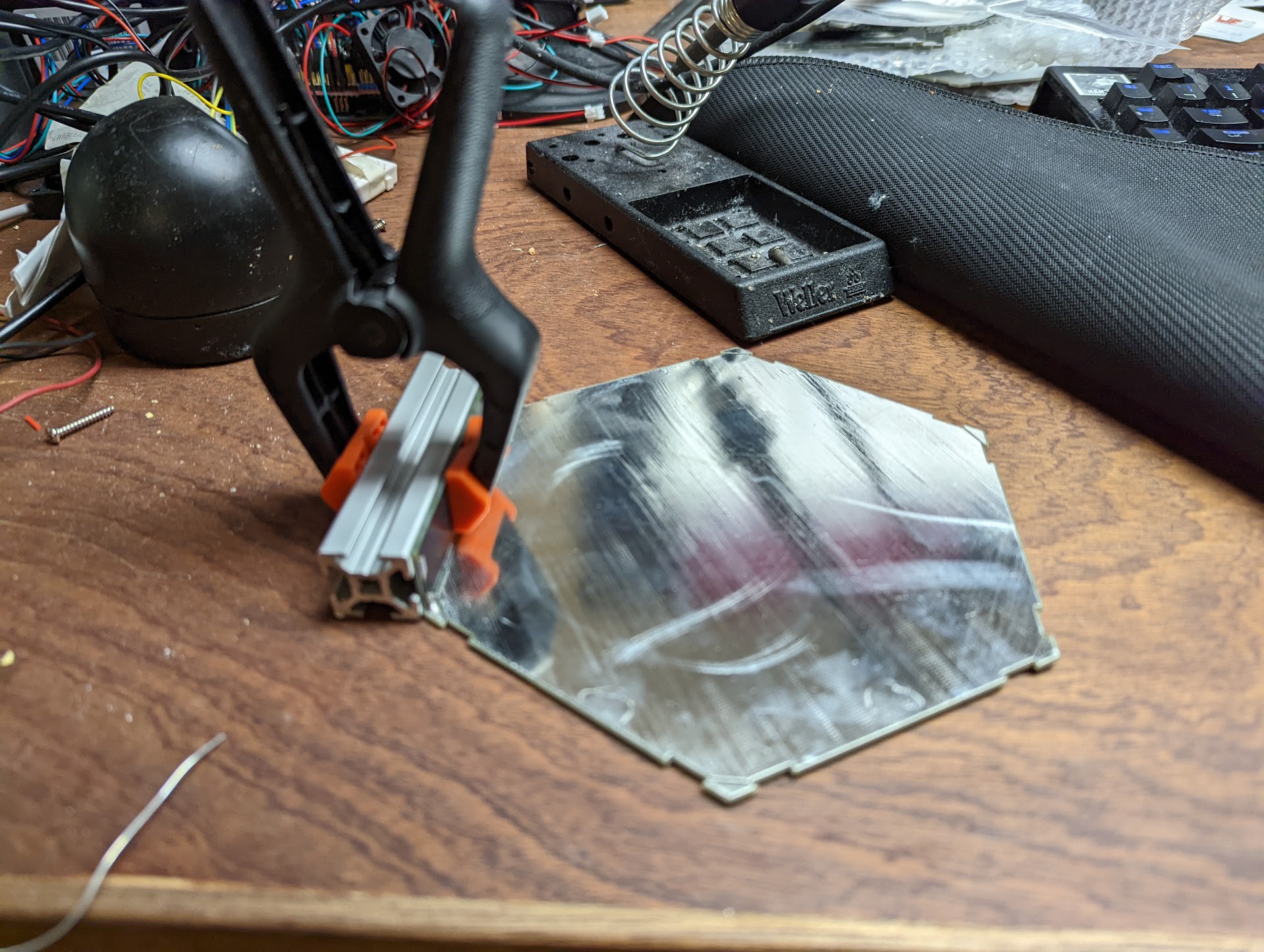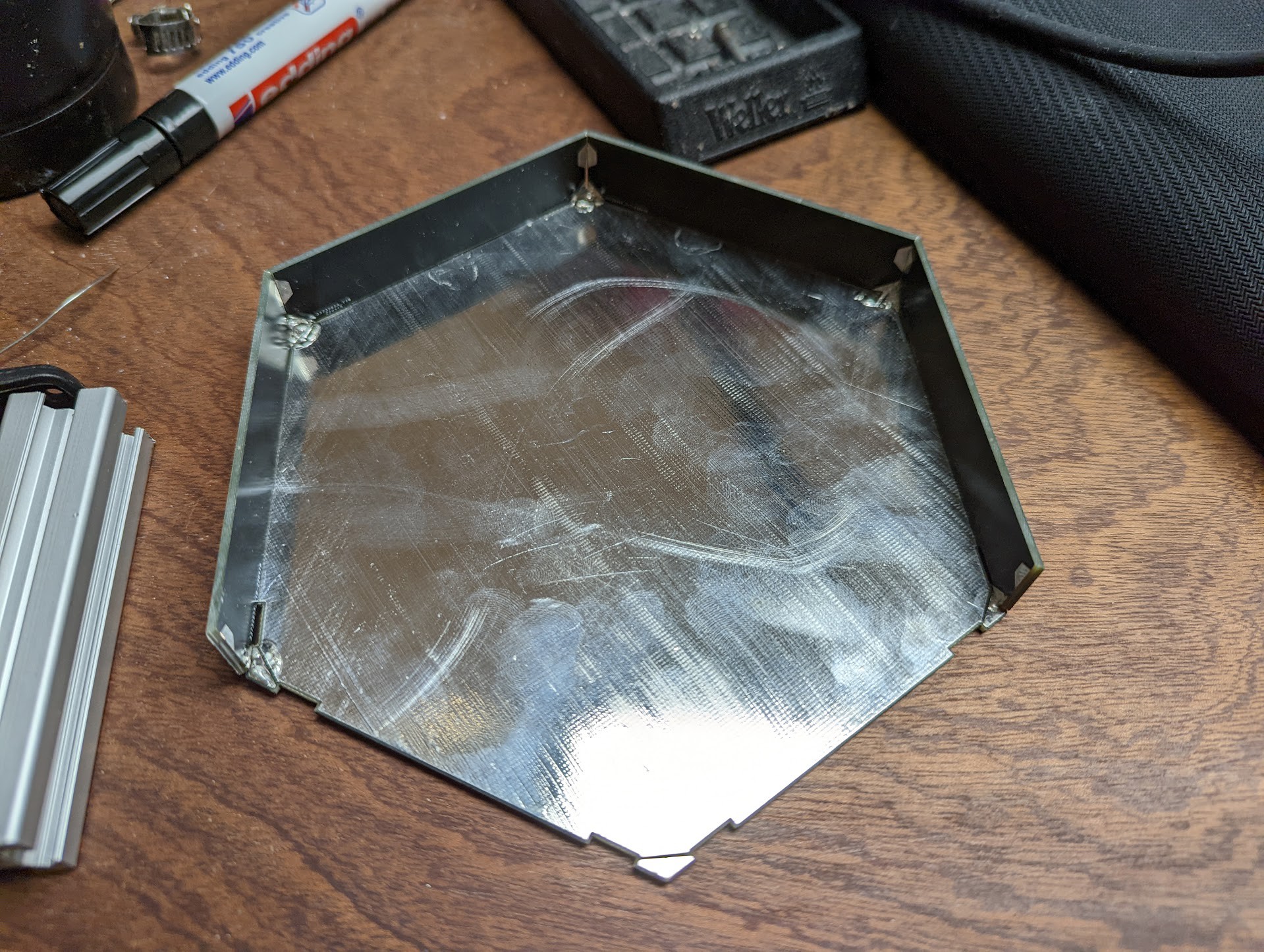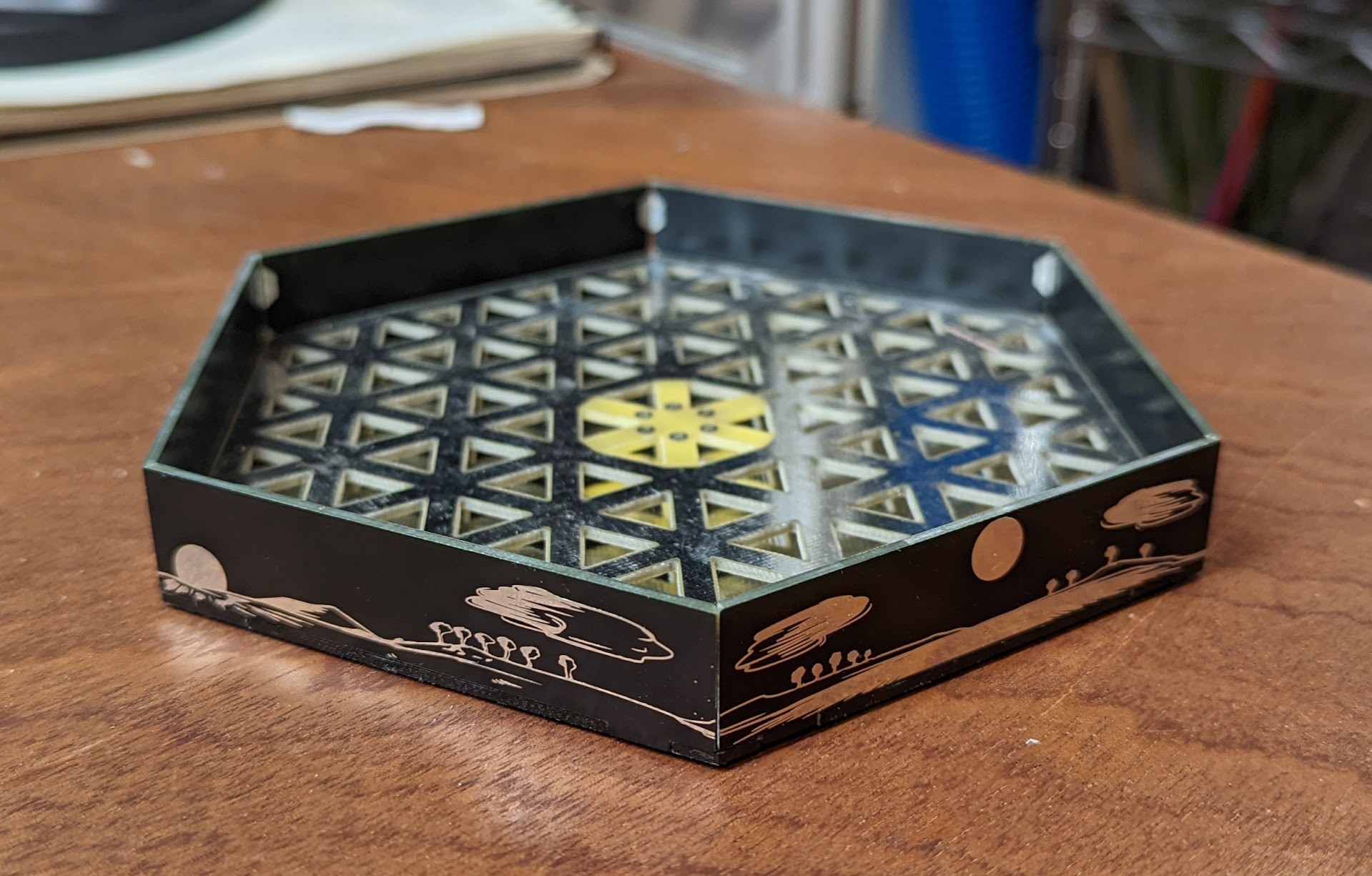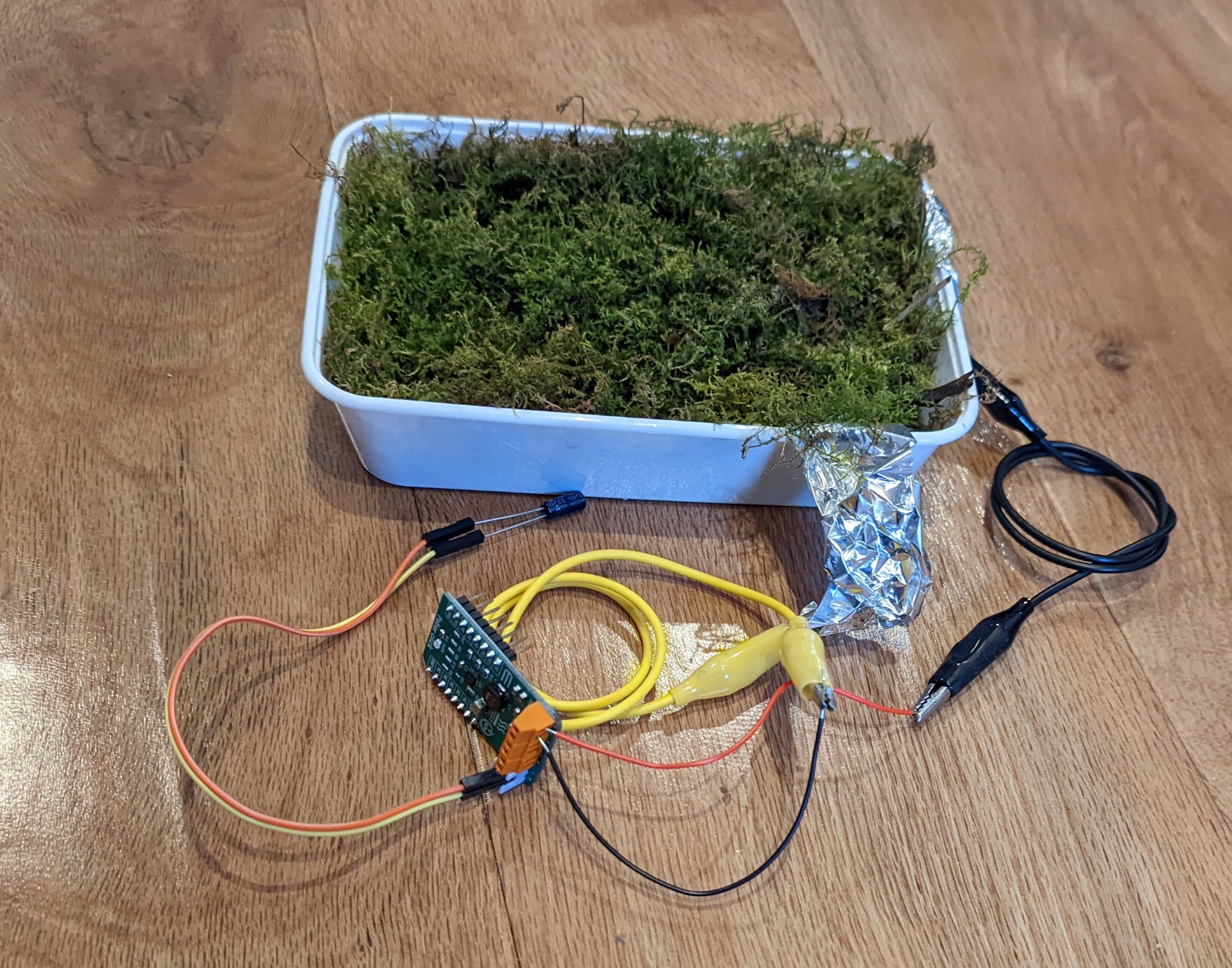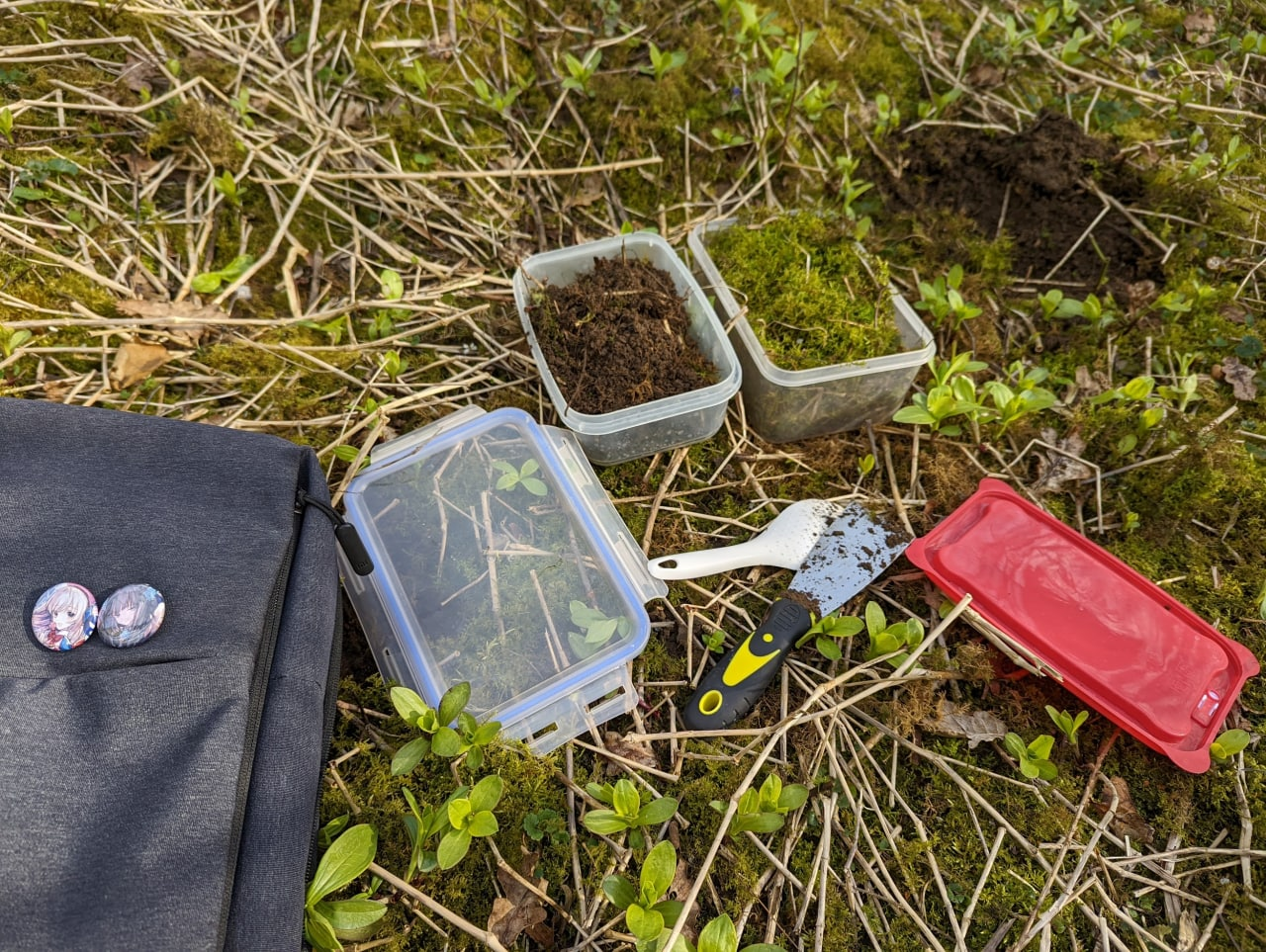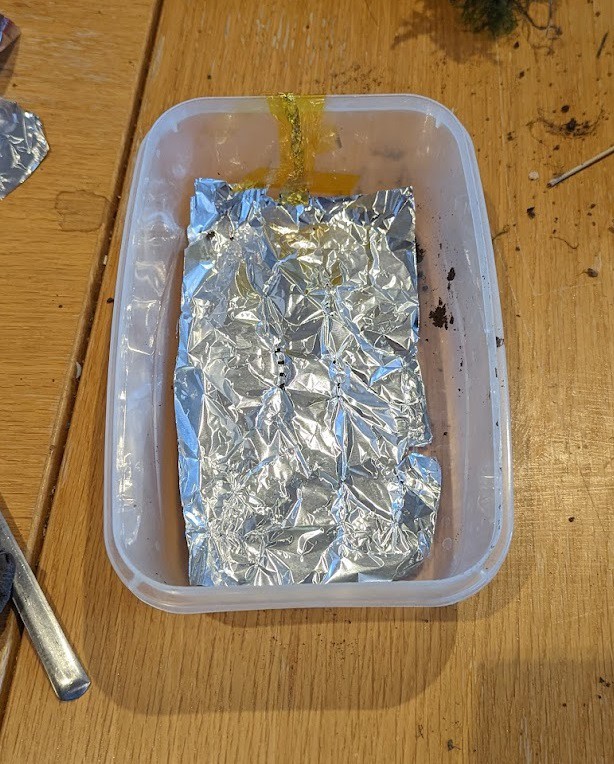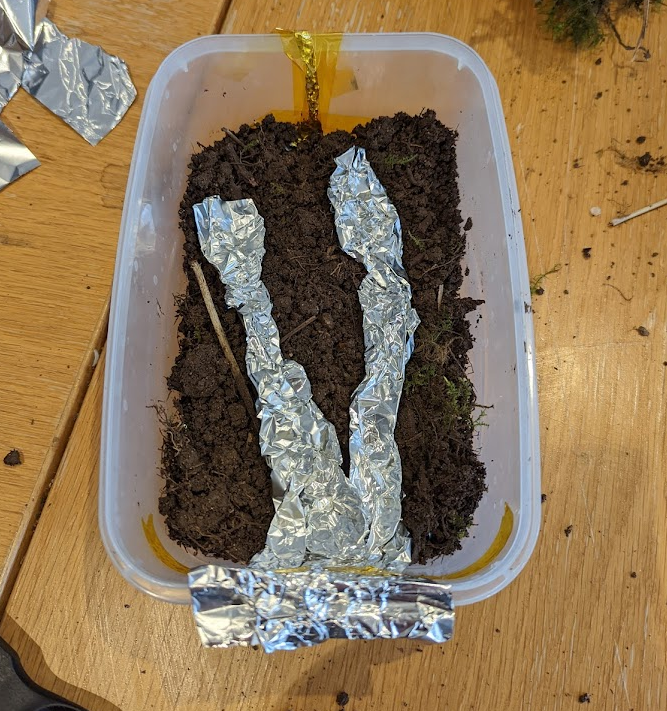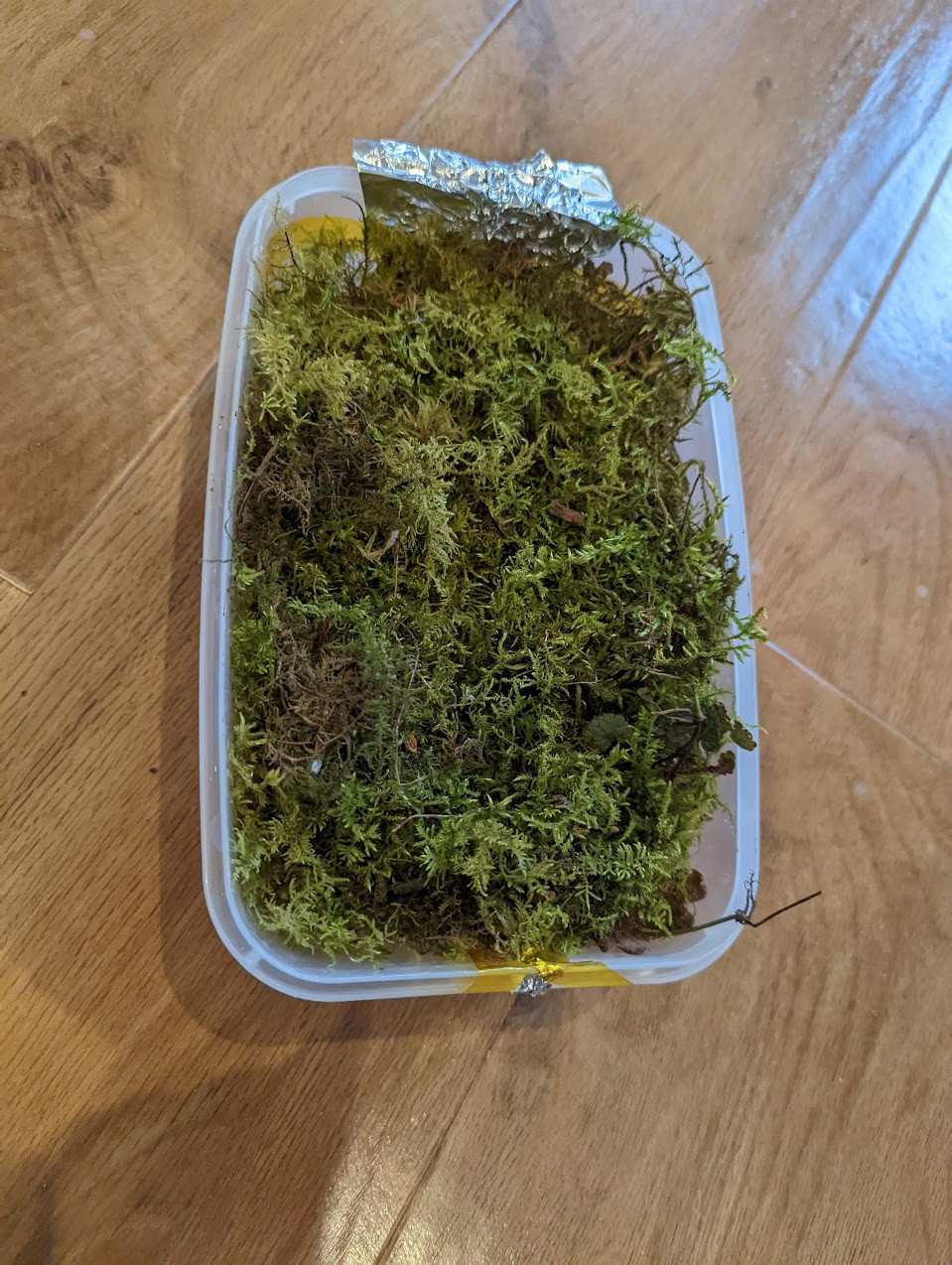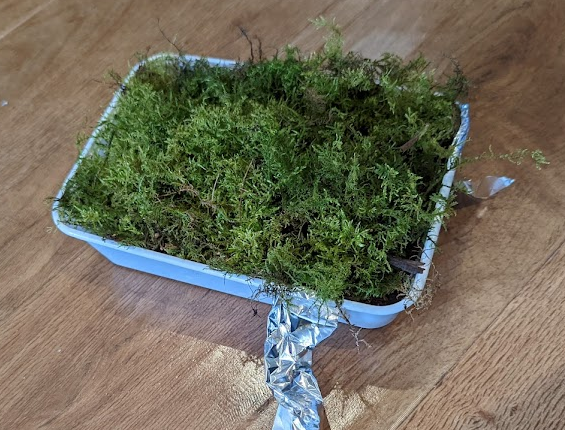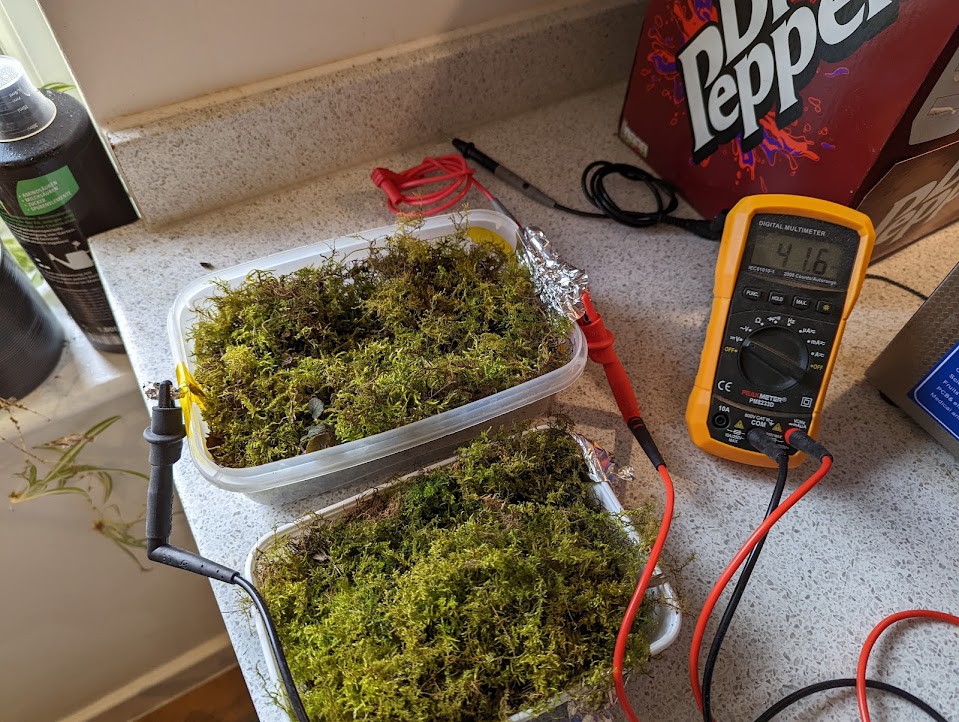-
Data logging and Github repo
05/11/2022 at 21:25 • 0 commentsThe first prototype built in the new setup works well, the capacitor charges more quiclkly when it does but still not very regulary. Still experimenting with data logging, the ultra low power nature of the experiment makes it hard to know how much current is sunk into the equipment. I use a Picoscope 3206B for this experiment, and the flat capacitor (red) line could be either caused by the current being sunked into the Picoscope or just the operation threshold voltage of the energy harvester which is just above 100mV.

In red the capacitor voltage, in blue the fuel cell voltage over 5 hours
Both the resolution of the graph and the potential issues of the equipment effect are not great. Right now the best results have been achieved with the least measurements! just letting the energy harvesting do its thing. We are looking at getting a low power measurement equipment that would both work for our tests and not break the bank at the same time, and hopefully increase the power output of the cells to make them less sassy.
We finally uploaded all the files to github too! more of the electronics to come, right now it's mostly the fuel cell build and the artwork which we published.
Next time!We are building a few more prototypes for a few reasons: one is to get more data points, so far each prototype has produced electricity but behaved differently. We want to figure out which step of the build process affects the performances to get a more consistent output. We will also try to chain them to achieve a higher voltage and power output. Finally: there are a few different constructions we want to try and compare. Stay tuned~
-
LED blinks!
04/30/2022 at 22:53 • 0 commentsFinally! Some energy generated by the microbial fuel cell has been harvested and put to use~
The aim of this demonstration is to showcase that the concept does work and generate electricity in a beautiful and simple way. Once I figured out a way to make the fuel cell part more reliable, we will make it an educational kit since the electronics, apart from the maybe energy harvesting module, is very straightforward and ludic.
The new setup was populated with moss (gathered locally) and as learned from the previous tests, waited for a few days for the system to settle (and to keep the moss happy and hydrated!). Then I monitored the voltage output for a day, which seems to average at 200mV, although I think it has not fully settled yet since I get wildly different measurements day to day. I plugged the energy harvesting circuit to it, and managed to charge a 220uF capacitor over 2 days to 4.2V!
Here is a video of the capacitor powering the LED for a few seconds:

The setup is so far very similar to the 2 previous test samples, but much more reliable: the aluminium foil anode and cathode were not very stable. The parts you cannot see in this picture are just the switch, a resistor, the 220uF capacitor and energy harvester. The PCB construction allows for very good contact, although I completely forgot to plan for integration of the energy harvesting module and wiring in the design, so it is effectively a PCB that contains 0 electronics. As an EE engineer the irony is not lost on me. :)
This setup also includes some artwork on the walls of our moss container: each panel shows a different phase of a day cycle. Morning to noon, noon to afternoon, afternoon to dusk, dusk to the dead of night, and into dawn which then cycles back into morning. We thought it was fitting for the very organic, natural theme of our experiment.
The moss is powering an LED in the middle of a wire flower which "grows" from the center of the tiny moss garden. It represents a small ecosystem with living microbals and lifecycle.
Next Time!
It is a very small amount of power, but as an early PoC with my limited knowledge of fuel cells I am thrilled to see what we will power with this next make! The design of the cell should make it easier to build more and tile them together to increase current or voltage output. With a few more cells, I hope to be able to regularly pulse a low power radio or change text on an e-ink display. A low hanging fruit that has yet to be picked is using a low leakage current capacitor, and not the first one that looked decent from my spare part bin :'3. Stay tuned~
-
Designing a better fuel cell
04/29/2022 at 21:58 • 0 commentsThe construction of the container is fairly simple and consist of the following layers:
This is a very basic overview, but the parameters that seems to affect yield are:
- The surface area of the anode, best results have been obtained with a conductive "matrix", which is not mentioned in the research paper. For the build I will try a grid to maximise the surface area while keeping it conductive.
- A large flat and even surface that can be a good conductor all across - for that I have a PCB in mind.
- Possibly a good dielectric and porrous material between the anode and cathode? there is little about this specifically so it will require some tests.
Following these constraints, this is the design to try next:


The top is a PCB grid, with plating on both sides, and the bottom is a large surface of copper. Since most of the container is made out of PCB, the sides to hold it together are made of FR4 too with little pads to hold it together. Here are some pictures of the assembly!





Next time!
Of course populating the new cell with moss! but also more test and datalogging on current fuel cells to understand how they work and perform better~
-
Harvesting Electricity
04/29/2022 at 20:07 • 0 commentsThe microbial fuel cell only produces a small amount of electricity, in the range of a few hundreds millivolts and current depending on the surface area - but for the ~0.06m^2, we are looking at a few dozen microamps.
Making use of such a small power is no easy feat but thanksfully there are a few ICs specially designed for energy harvesting. 2 specific ICs caught our eyes:- The SPV1050, able to work from 75mV, doesn't require tuning and is available as a devboard (MIKROE-3814 Peltier Click) However the low current performances are not great, it needs in the range of ~10uA to 100uA to function efficiently.
- The BQ25504 works at a slightly higher minimum voltage of 130mV, requires to be started at 600mV and needs to be configured as well. However the low current performances seem to be significantly better!
Both of these have their pros and cons, and so we will test both and see which one works the best. The BQ25504 will require a bit more homework but we got our hands on the Peltier Click devboard!
A short test shows it can charge a 10uF capacitor to 4.2V (maximum voltage since the circuit tries to charge a lithium ion cell) over a few days!
Next time!
Design of a better Microbial Fuel Cell casing and especially improving the anode and cathode will hopefully lead to better performances~
-
First Prototype!
04/28/2022 at 23:49 • 0 commentsThe first step was to build a prototype as a first PoC, to verify that the concept works (it adds up on paper, but generating electricity from microbes living in moss is incredible!). So I went to pick up moss nearby and built an experimental setup similar to this build.
The build consist of a plastic container, a lining of aluminium foil at the bottom as a cathode, a layer of soil, another layer of aluminium foil as anode, and then a bit of soil and the moss. Here is what it looks like:


And then build a second on for control
I monitored the voltage I could get on the 2 fuel cells over a few days, as expected it took a bit of time to settle, here are the highest voltage measured on them on each day:
Cell 1 Cell 2 Day 1 41mV 16mV Day 2 79mV 20mV Day 3 131mV 32mV Day 4 141mV 24mV 
Measurement of Cell 1's voltage on the first day Note this is just the voltage - not the power, although in the case of microbial fuel cells they are often proportional. Further testing seems to confirm that cell 2 is underperfoming.
Next time!
The next step is to find a way to harvest the very low power electric charge and design a better container and set of anode and cathode~
Moss Microbial Fuel Cell
Harvesting electricity with the help of moss dwelling microorganisms!
 Guru-san
Guru-san